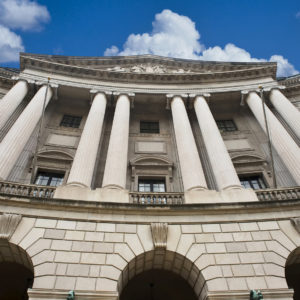Editor’s Note: For an alternative viewpoint, please see: Point: A Bright Future for the Environment
When President Trump laid out his agenda before Congress recently, he vowed to “promote clean air and clean water.”
Then why did his administration recently propose to slash the Environmental Protection Agency’s current budget by 24 percent and cut its staff by 20 percent? All told, the administration is calling for eliminating 38 programs entirely and reducing state grants and air and water programs by 30 percent.
That’s certainly no way to promote clean air and clean water.
The EPA has made remarkable progress cleaning up pollution since its inception in 1970, but there is much more work to do. In 2015 alone, polluters dumped more than 190 million tons of toxic chemicals into waterways nationwide; at least 5,000 community drinking-water systems violated federal lead-level regulations; and 116 million Americans lived in counties with harmful levels of ozone or particle pollution, which have been linked to lung cancer, asthma, cardiovascular damage, reproductive problems and premature death.
If anything, today’s environmental challenges suggest that the EPA needs more money to carry out its congressionally mandated mission, especially since Congress already reduced its budget between fiscal years 2010 and 2016 by 28 percent in real dollars to $8.14 billion, a paltry 0.2 percent of the projected $4-trillion fiscal year 2017 federal budget.
Likewise, the agency is short-staffed. Its workforce shrunk 10 percent over the last decade, from 17,000 in 2007 to about 15,000 today, and President Trump’s proposed budget would reduce it to about 12,000. It hasn’t been that small since the mid-1980s. By contrast, nearly 100,000 people work at the Agriculture Department and 78,000 staff the Department of Health and Human Services.
For his part, EPA Administrator Scott Pruitt, until recently Oklahoma’s attorney general, maintains that state environmental agencies can pick up the slack. Experts, however, disagree.
“State agencies play an important role in protecting their citizens from dangerous pollution,” says Carol Browner, who served as EPA administrator during the Clinton administration after running Florida’s Department of Environmental Regulation. “But they can’t do the job alone. They rely on the EPA’s expert analysis and support to set and enforce pollution standards. Many states would not have the resources to replace the EPA work on which they rely.”
Ken Kimmell, who ran the Massachusetts Department of Environmental Protection before becoming president of the Union of Concerned Scientists in 2014, also stresses the importance of EPA technical assistance, as well as its state grants, which comprise a significant chunk of its annual expenditures. In fiscal year 2016, those grants amounted to nearly 45 percent of the agency’s budget.
“Having served as a state environmental commissioner, I know from personal experience that state environmental agencies are already strapped,” Kimmell says. “They typically lack the technical experts employed at the EPA, and stand in no position to take on additional enforcement responsibilities shed by the EPA.”
The Massachusetts agency’s staff shrank nearly 50 percent between 2002 and 2012 due to budget cuts, even as the agency’s responsibilities grew, Kimmel adds. “If the EPA’s budget is cut, it will mean even fewer resources for states, because states now receive a significant share of the EPA’s budget to cover enforcement activities.”
Massachusetts isn’t the only state that has had to tighten its belt. Forty state environmental agencies have reduced staff in recent years, according to an October 2016 report by the Center for Public Integrity. Since 2007, staffing at environmental agencies in Illinois and Arizona dropped by more than a third, in New York by nearly a quarter, and in Michigan by a fifth.
To make matters worse, a number of governors and state legislators are more interested in protecting polluters than their own citizens. Florida, Louisiana, North Carolina, Texas, West Virginia, Wisconsin, and Pruitt’s home state of Oklahoma are just some of the more flagrant examples of where polluter-funded elected officials — including Pruitt — have deliberately undermined their own environmental agencies and cut back enforcement.
Pruitt recently acknowledged that Americans “care about the air they breathe and they care about the water they drink.” That’s right, we do. And we support a robust EPA. A January Reuters/Ipsos poll found that more than 60 percent of Americans want the EPA’s authority preserved or strengthened.
So let’s call out the Trump administration’s plan to gut the EPA’s budget and staff for what it is: a gift to polluters that threatens our air and water — and our health.

